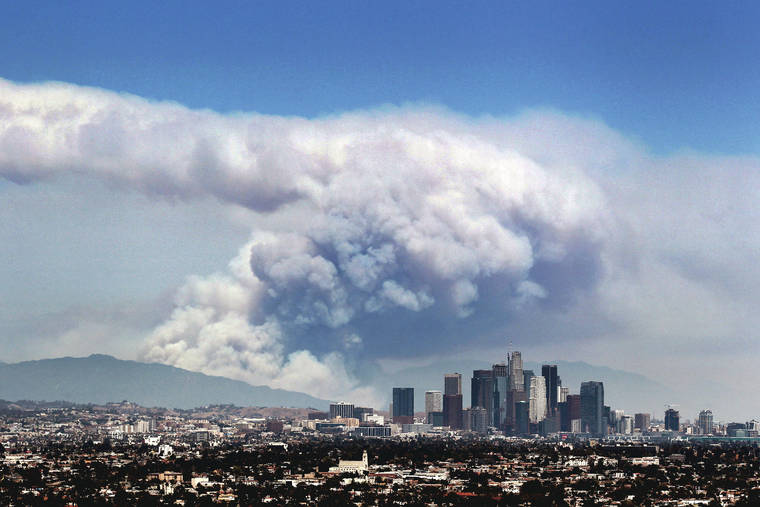Spending her life in Los Angeles, Morgan Andersen knows natural disasters all too well. In college, an earthquake shook her home hard. Her grandfather was affected by recent wildfires in neighboring Orange County.
“It’s just that constant reminder, ‘Oh yeah, we live somewhere where there’s natural disasters and they can strike at any time,’” said the 29-year-old marketing executive.
The Federal Emergency Management Agency has calculated the risk for every county in America for 18 types of natural disasters, such as earthquakes, hurricanes, tornadoes, floods, volcanoes and even tsunamis. And of the more than 3,000 counties, Los Angeles County has the highest ranking in the National Risk Index.
The way FEMA calculates the index spotlights places long known as danger spots, like Los Angeles, but some other places highlighted run counter to what most people would think. For instance, eastern cities such as New York and Philadelphia rank far higher on the risk for tornadoes than tornado alley stalwarts Oklahoma and Kansas.
And the county with the biggest coastal flood risk is one in Washington state that’s not on the ocean, although its river is tidal.
Those seeming oddities occur because FEMA’s index scores how often disasters strike, how many people and how much property are in harm’s way, how vulnerable the population is socially and how well the area is able to bounce back. And that results in a high risk assessment for big cities with lots of poor people and expensive property that are ill-prepared to be hit by once-in-a-generation disasters.
While the rankings may seem “counterintuitive,” the degree of risk isn’t just how often a type of natural disaster strikes a place, but how bad the toll would be, according to FEMA’s Mike Grimm.
Take tornadoes. Two New York City counties, Philadelphia, St. Louis and Hudson County, New Jersey, are FEMA’s top five riskiest counties for tornadoes.
In general, Oklahoma is twice as likely to get tornadoes as New York City, but the damage potential is much higher in New York because there are 20 times the people and nearly 20 times the property value at risk, FEMA officials said.
“It’s that risk perception that it won’t happen to me,” Grimm said. “Just because I haven’t seen it in my lifetime doesn’t mean it won’t happen.”
Some of FEMA’s risk rankings by disaster type seem obvious. Miami has the highest risk for hurricanes, lightning, and river flooding. Hawaii County is tops in volcano risk and Honolulu County for tsunamis, Dallas for hail, Philadelphia for heat waves and California’s Riverside County for wildfires.



